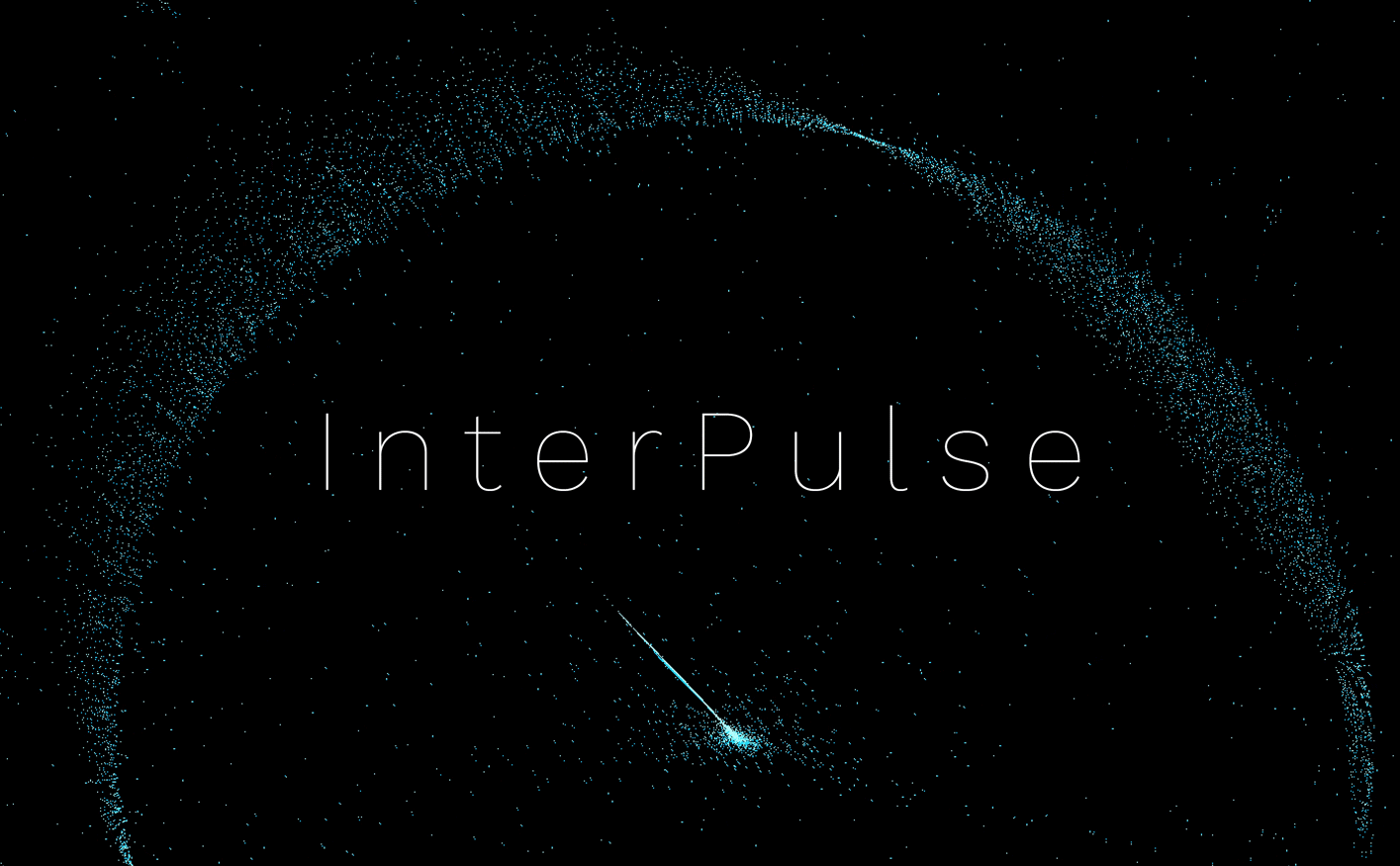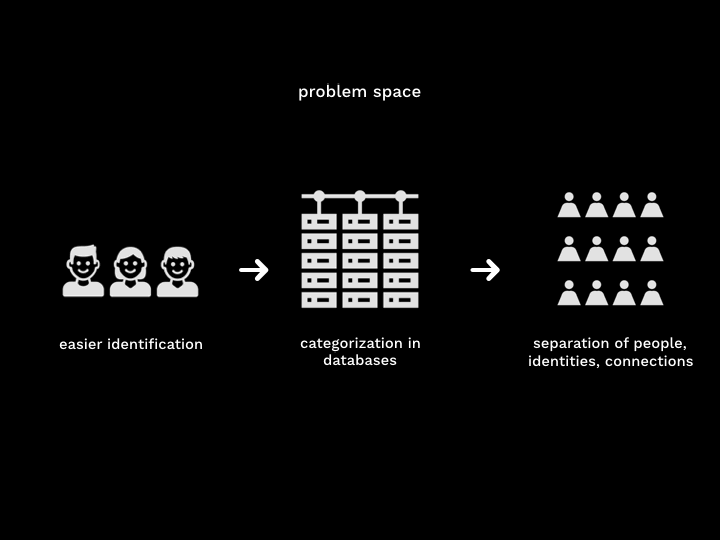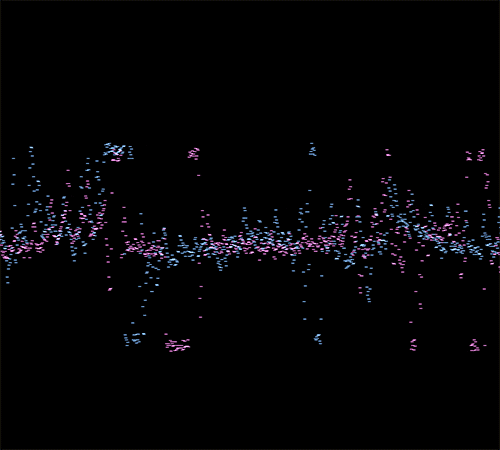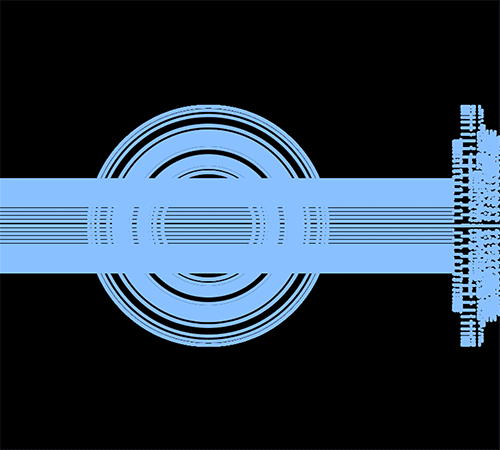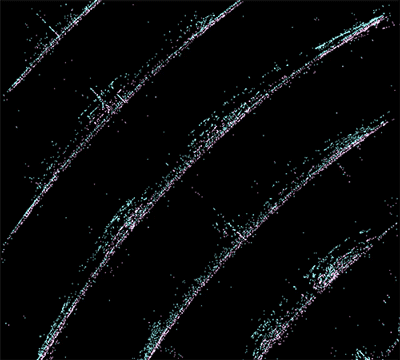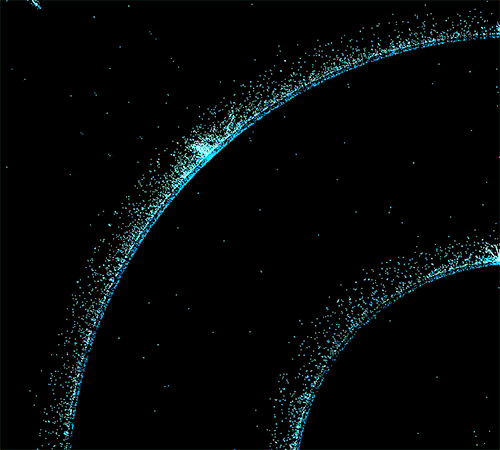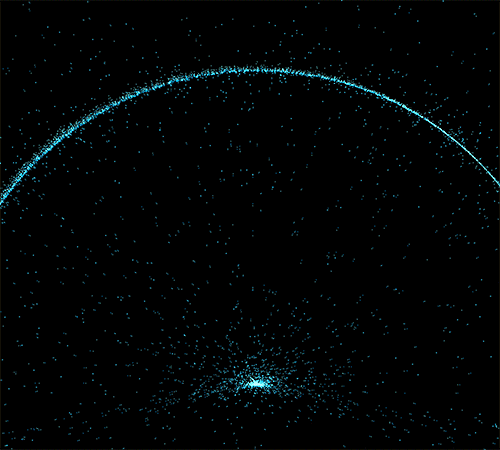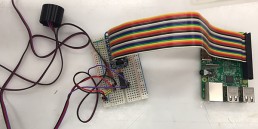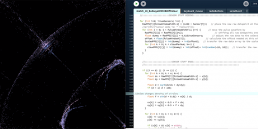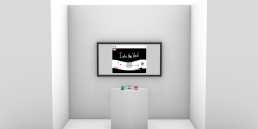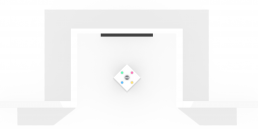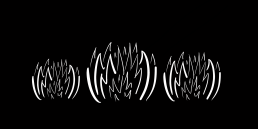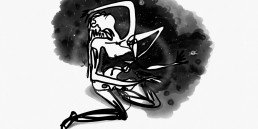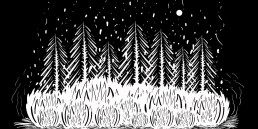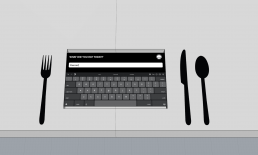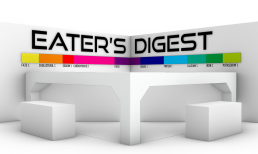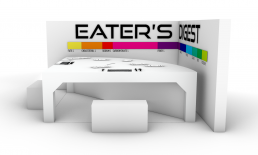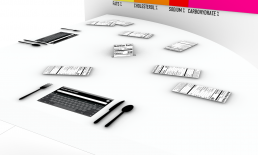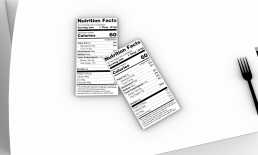InterPulse | Allison Chan
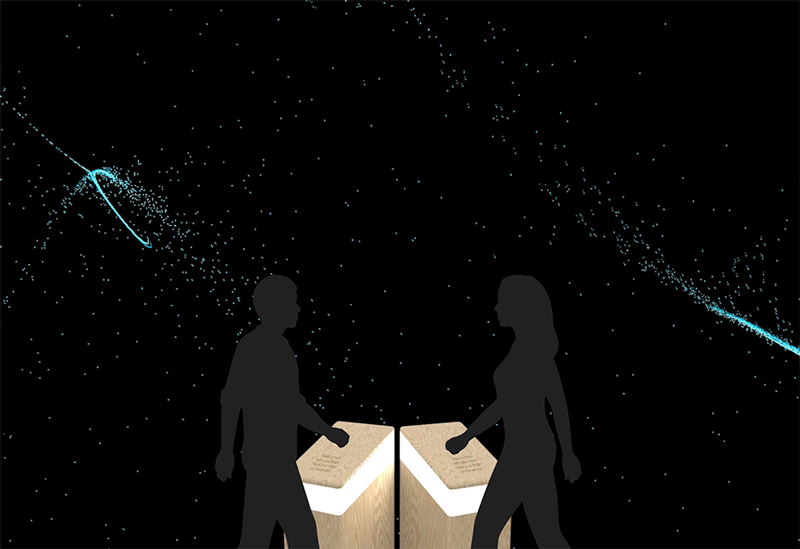
InterPulse
An interactive art installation where people create a collaborative visualization of their heartbeats.
How can we use our biometric data in more meaningful ways to create social connections?
The Interconnection of Our Pulses
The user has the power to change the visualizations using their heartbeats, emphasizing that simply being alive and existing has an impact on the world we live in.
“You are an aperture through which the universe is looking at and exploring itself.”
– Alan Watts
Our biometrics can be used to remind us of more meaningful information than our biological measurements, like the intangible interconnectivity of our existences that is a social and spiritual phenomenon in itself.
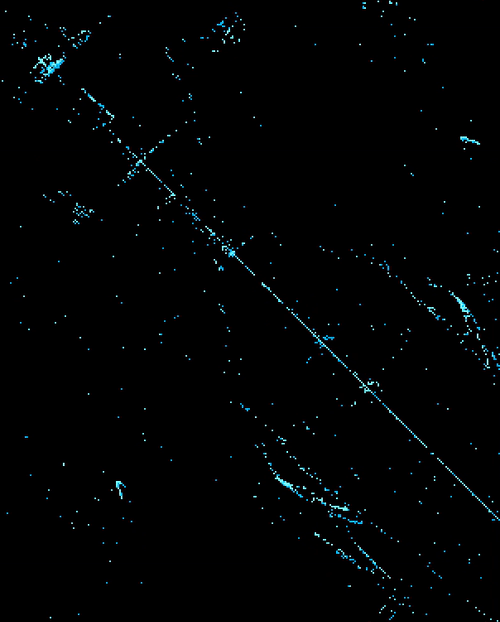
Problem Space
Current Usage of Biometrics
Biometrics are taken by the technologies that we use everyday, like facial recognition to unlock our phones and fingerprint recognition to go through airport security.
They have made identification of people easier, but they also categorize us into databases, and create separation in people, identities, and the connections we have with one another.
So how can we use biometric data in more meaningful ways for social connection?
Rethinking Biometrics
Ethical Issues
Inequities can be heightened for marginalized demographics when there are biases in which biometrics are collected in databases and how they are used.
Discriminatory
Static biometrics are built with the Caucasian, male, and able-bodied standard, discriminating those of other races, genders, ages, and abilities.
Control
There is an unequal power balance between the people who use technology versus those on which the technology is used.
Fragmented
Placing value on using our static biometric data for identification fragments our identity into specific body parts.
Design Opportunities
These design opportunities use dynamic biometrics to examine the ethical issues.
Universal
Using biometrics that are universal amongst all individuals makes the design more inclusive, as the data is more easily accessible from everyone.
Freedom
When biometrics are always dynamic and changing, people have more opportunities to make their own unique interpretations about it.
Holistic
Allowing people to make their own interpretations also shows they have value other than just their specific body parts; in their stories and beliefs as well.
Alternative Model of Biometrics
The current model based on the issues ends narrowly with quantitative information that categorizes people and their identities.
The alternative model I created uses the design opportunities and leads to an open-end that moves towards qualitative information: aspects of our identities that are more abstract and can’t be put into numbers.
Visualization Iterations
In the final sketch, the movement and colours of the particles are based on data from the heartbeats of the users. Both users’ data are combined to emphasize the idea of interconnectivity.
The particles are used to create a cosmic/astral aesthetic, connoting the interconnected and outer-worldly sentiment.
Programming With Arduino & Processing
The heartbeat data sent to the pulse sensors are picked up by Arduino, and sent to Processing to be drawn into a visualization.
Under the current circumstances that forced the physical production of this production to come to a halt, I will finish building the device when campus reopens. I will be adding LED lights, sounds, and hopefully one more pulse sensor.
Reflection
Social connection in InterPulse happens in the figurative sense, and not forcing it physically or literally. Designers can create ways to make social connections, but what are the connections that are already inherent but overlooked? What are the intangible aspects around us to which we have forgotten our connections?
As biometric technologies continue to advance and merge the lines between human and the machine, it will become increasingly more important to question the impact of the machine on us, us on the machine, and us on the world that is around us.

Hey there, I'm Allison Chan!
I’m an interactive designer– pushing the boundaries of interactive art + new technologies with interaction design.
Design, to me, embraces the intangible complexities of human diversity as tangible opportunities. In other words, I love designing ways for people to share their individuality and different perspectives with each other.
From my exhibition experience at Science World, I hope to continue making public work that builds meaningful connections between people.
Compassion for a Lonely City
What if gameplay can become a tool in discovering the importance of human interconnection within a lonely city?
Solution
The “Compassion for a Lonely City” research project centers around a theme of isolation and disconnection in the city of Vancouver. Through collaborative gameplay, this project aims to bring awareness, inspiration and create critical conversation around Vancouver’s loneliness cultures and it’s lack of interconnectivity.
This project encompasses two conceptualizations of the gaming experience called “Into the Void”. The first, an online game with an “In-Real-World” aspect and the second being an Interactive installation, an alternative 2-4 player arcade table, intended for a public/gallery space. As both of these conceptualizations are simply containers to the gaming experience, and due to the unprecedented nature of COVID-19, the project focused on creating a prototype of “Into the Void” that would have been used within the interactive installation.
Opportunity
While “Compassion for a Lonely City” may not “solve” loneliness, using gameplay as a medium to address loneliness in Vancouver can act as a point of entry by reaching the affected demographic through online communities. It also has the ability to transition a screen dominant experience into our physical reality, which can help mediate a balance between our online communities and physical communities. Additionally, I want to challenge the irony of making a video game for this project since they can be naturally isolating experiences. Overall, we need to re-evaluate our relationship with strangers in order to cultivate new meaning in what community and compassion for others are to us. To do that, we need more intriguing opportunities in creating human interconnections in alternative and evocative ways.
Process
In the process of realizing “Compassion for a lonely City” I used UX design methods, such as exploration and observation to conversation and user testing, in combination with my artistic practice. This was at times challenging but ultimately rewarding and lead to unexpected outcomes. Scratch was used to develop the video game protoypes and a Makey Makey controller for the experience of the arcade. More about my research and process can be found in my medium article:
Reflection
I would like to see the online to in-real world game fully realized. Within that, there is also a potential space that the two parts can be combined into one cohesive experience. Although my technical abilities are not currently adequate at this stage the experience could use augmented reality to weave its story between the physical and real world. This approach would develop the game towards a larger city-scale and act as a collection tool for player data around isolation and loneliness to reflect back meaningful information to the user as well as an aggregated emotional sentiment on a larger scale.
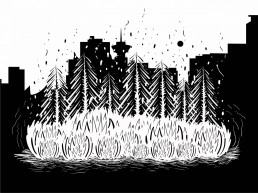
About Julia Nowakowski
As an interaction designer, I value the ability to work in an interdisciplinary nature that is required to build complex concepts. Within that, I aim to continually learn and build my skill set since design as a whole is always changing and there is no reason to stop and say that I know enough.
Contact me at julia.nowakowski9@gmail.com or Link up on Linkedin
Eater's Digest
If food is essential for our survival- How do we feed our cities?
Critical Context
Modern lifestyle has gotten us off the right track, with fast foods, alcohol abuse, drug dependencies, a polluted environment and high-tech stress. Nature intended to fuel our inner healing force with the right natural substances to enable the body to function to its fullest potential. So how do we educate and empower a community of their diet?
An experimental survey invites eaters to sit and enter in their last meal eaten with Eater’s Digest. The average of all meals entered is converted into their individual nutritional composition, visualizing how a community is currently eating. Eaters are also invited to print their own Nutritional Fact labels, communicating information of their on meals.
Data Acquisition & Preparation
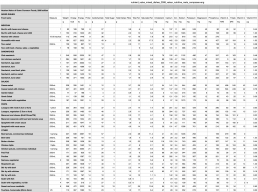
Canadian Nutrient File: Nutrient Values of Some Common Foods. Published by Health Canada, the Nutrient Value of Some Common Foods (NVSCF) provides Canadians with a resource that lists 19 nutrients for 1000 of the most commonly consumed foods in Canada.
Data Modelling & Visualization
A live horizontal bar graph clearly communicates how a community is eating, the nutritional composition of their diets.
Data Analysis & Reflection
Community-wide nutritional information is significant data. It can help us analyze deficiencies in diet, understand resources that a community may need to implement, and help us make informed food choices through a better understanding of the nutrient content of the foods we eat. This survey is location variable, and can be used to compare and contrast various community diets – based on location, climate, and culture. Nutritional Fact Labels serves its purpose in breaking down the nutritional composition of individual foods. Eater’s Digest helps bring new perspectives on what we consume, and why. Giving an opportunity for social innovation that builds resilient communities.

Michael Peter, 1998
Third-culture citizen with a global perspective, not afraid of taking risks or embracing uncertainty. His work is widely interdisciplinary, focused on building resilient societies, with experience in ceramics, interactive media, service design and, digital fabrication. His design process is greatly affected by research through experimentation; uncovering the new. He has a strong sense of fairness, justice, and respect for the dignity of individuals and communities through his designs. He is also highly reflective, able to assess and understand his strengths and limitations in order to support his learning and personal development. Michael is currently pursuing MRes Design at the Royal College of Art. Every day he looks for the excitement of what may occur in the realm of all possibilities.
www.linkedin.com/mikeiszen
